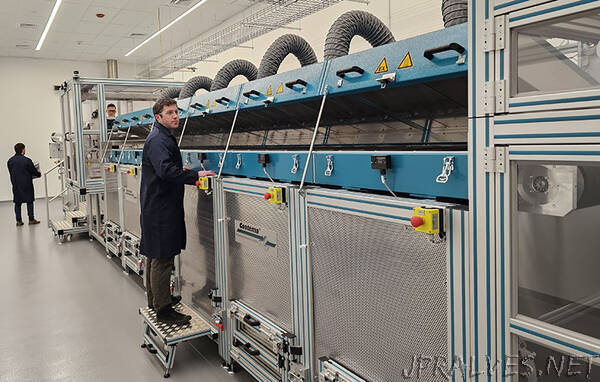
“Advent Technologies to manufacture next-generation hydrogen fuel cells that could power transportation and industry
The opening of a new hydrogen fuel cell research, development and manufacturing facility in Massachusetts is helping drive fuel cell technology forward, closer to a future on our roads and in our industries. Fuel cells are energy-conversion devices that produce electricity by electrochemically combining hydrogen and oxygen from the air. As part of alternative material design, the technology, developed at Los Alamos National Laboratory and commercialized through agreements with Advent Technologies, has the potential to be harnessed for zero-emission transportation.
“This facility, and the commercialization process that made it possible, is an important step in the journey we’ve been on for a long time at Los Alamos with fuel cell technologies,” said Yu Seung Kim, a materials scientist at the Laboratory and principal investigator on the project. “A durable, long-lasting fuel cell is key to implementing zero-emission fuel cell technology in use cases like trucking and heavy equipment.”
Located in Charlestown, Massachusetts, Advent’s new facility will manufacture next-generation membrane electrode assemblies — a core component of fuel cells — that Advent anticipates truck and other vehicle manufacturers may use for powering heavy-duty mobility applications with a longer lifetime and double the power density compared to previous fuel cell systems.
The new assembly design resolves problems that have kept hydrogen fuel cells from realizing their promise as engine systems. Overheating has proven a longstanding problem with even state-of-the-art fuel cells. Over several decades, researchers have sought to develop fuel cells that can operate above 100 degrees Celsius, a capability that enables simpler fuel cell systems through better heat and water management.
How this invention works
With support from Advanced Research Projects Agency – Energy (ARPA-E) funding and from DOE’s Energy Efficiency and Renewable Energy Hydrogen and Fuel Cell Technologies Office “L’Innovator” program, Kim’s research team invented a new polymer electrolyte system, protonated phosphonated polymers.
In that design, a proton from a perfluorosulfonic acid transfers to the phosphonated polymer and dramatically enhances proton conductivity, resulting in a high-performance fuel cell. Implementing the composite polymer electrolyte achieved a power density of nearly 800 milliwatts per square centimeter at 160 degrees Celsius, a 60% improvement compared to phosphoric acid-based fuel cells.
That success means the technology was ready for transition to the private sector, many miles closer to road-ready. The L’Innovator program allowed Advent to verify the manufacturability of the technology for its high-temperature proton-exchange membrane fuel cells, which it dubbed “Ion Pair MEA.” (MEA stands for membrane electrode assembly.)
Originally a two-year project, the success of the L’Innovator membraned electrode assembly project has seen it extended through 2024. Advent licensed five patents from the Laboratory to produce the product.
The Advent factory opening was attended by Kim, Advent Technologies CEO Vasilis Gregoriou, Massachusetts Gov. Maura Healy, Eric White of the Hydrogen and Fuel Cell Technologies Office and other officials.”
